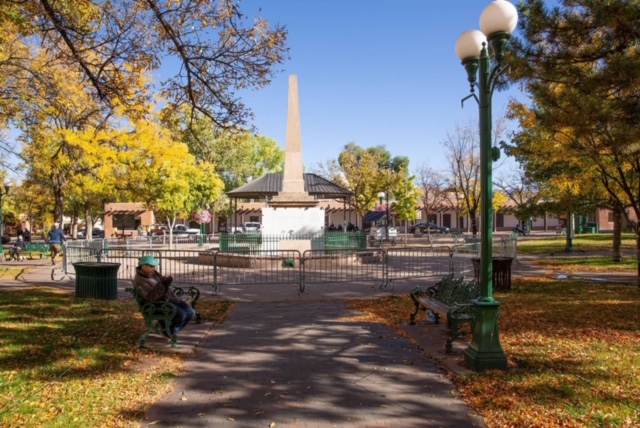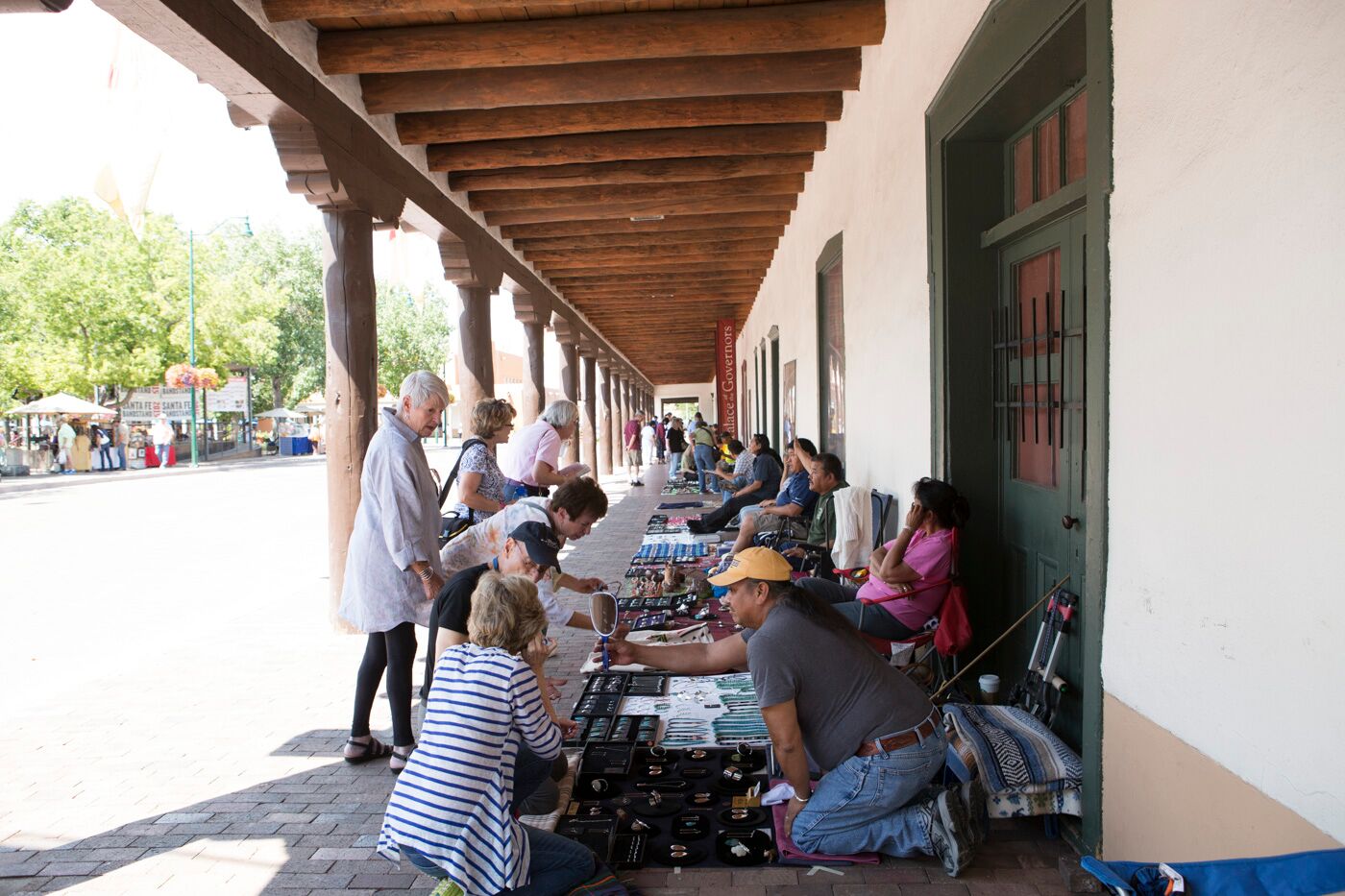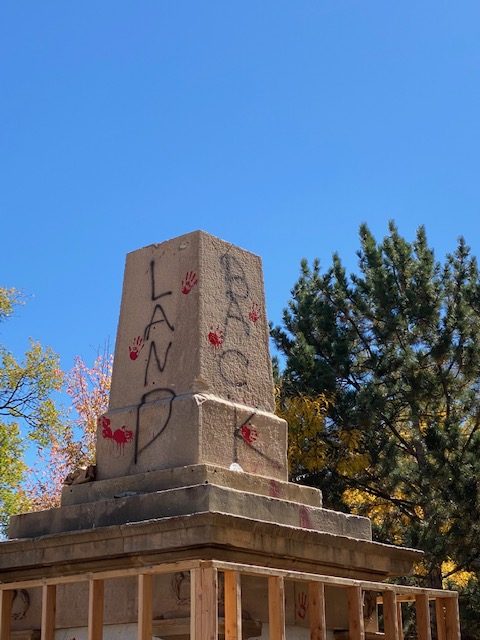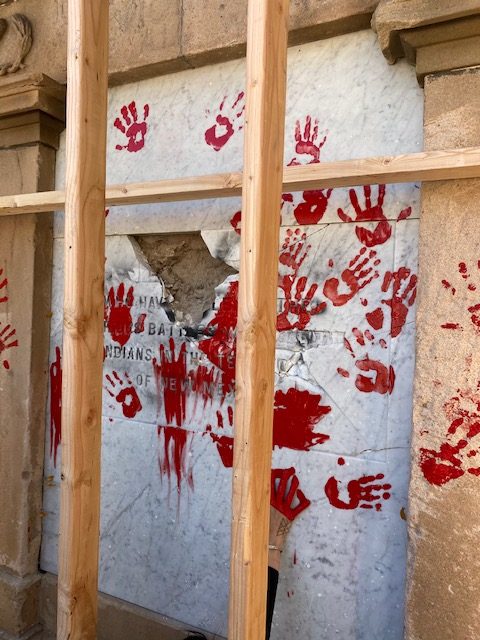When is an obelisk not just an obelisk?
When I was a child, my dad and I would sometimes walk down to Santa Fe Plaza, especially on cool autumn afternoons. We would get Cokes from Woolworth’s. My father would visit with friends and family, selling under the portal of the Palace of the Governor’s, and we would sit in the center of the Plaza, on the stone banco around the obelisk. My dad would point out the word savage which was etched into the marble plaque, and he would laugh.
“Those are your ancestors,” he would say, with no little bit of irony.
As I got older, the irony grew bolder. Under the shadow of that obelisk, on Tewa homelands, in a place we call O’gha Po’geh, we still exist. The word savage was chiseled away long ago, but it still echoes. The shadow of that obelisk was long and dark. Until yesterday. Yesterday we saw it fall. And now the shadow is gone too.
Our relatives who sell under the portal will no longer have to do so in the shadow of a monument to their genocide. Our children’s children will not see the echo of the word savage every time they cross the Plaza. All of those white people who sell native arts and crafts will still be making their living commodifying native culture, but they may be looking over their shoulder more frequently. They might just wonder what else could fall.
My father is now laughing for a different reason. We did something he had only dreamed of. We laid that monster to rest, on the ground, on Tewa homelands.
The obelisk was, ostensibly, a monument to Union ‘heroes’ who fought and died in the Civil War, the “war to end slavery.” That is what they say North of the Mason-Dixon Line. They also say it East of the Mississippi. Here in the West, we know a different story. Union soldiers here massacred Native people and removed us from our homelands.
One of the largest regiments of the Union army in New Mexico, the 1st NM Volunteers, was commanded by Kit Carson. The commander of the Union forces was John Chivington. Following the defeat of the Confederate Army in New Mexico and the end of the Civil War, these two men would remain in the military, but with a different enemy.
Chivington was redeployed with the 3rd Colorado Calvary which was specifically tasked with “defending” white communities against attacks by Natives. In November 1864, they launched an unprovoked attack on a Cheyenne/Arapaho encampment which was flying the US and the white flag, signifying that they were both under the protection of the US government and peaceful. Up to 500 people were killed, 2/3 of them women and children.
Chivington’s men scalped many of the dead; men, women, children and infants. He and his men decorated their weapons, hats, and clothes with scalps and other body parts, including human fetuses, and male and female genitalia. They cut off the breasts of the women and played catch with them. They also publicly displayed these battle trophies in Denver’s Apollo Theater and area saloons. This became known as the Sand Creek Massacre.
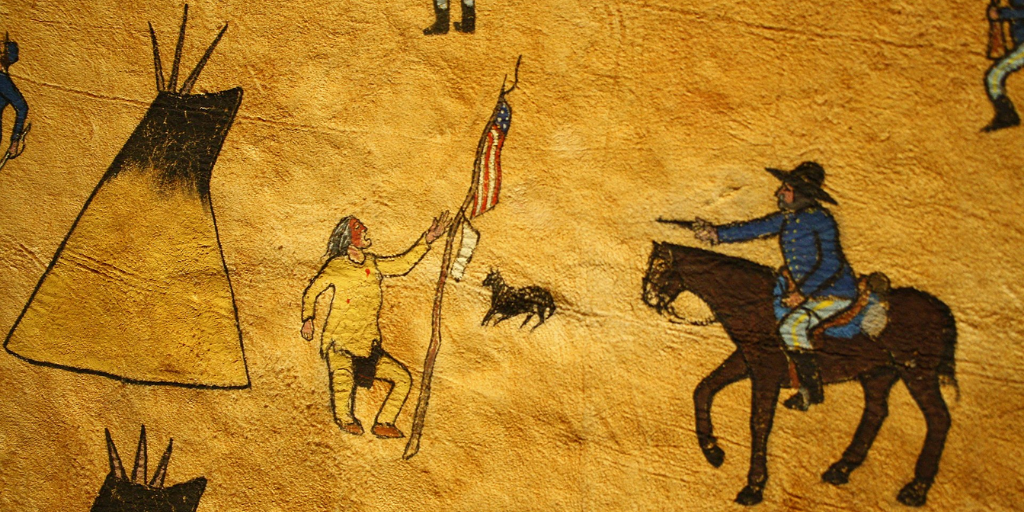
What was left of the 1st NM Volunteers was broken off into mobile units and redeployed against the Diné and Ndee. Kit Carson led the campaign to “pacify” the Natives. First, he launched a brutal assault on the Mescalero and then turned his attention to the Diné homelands. Carson became the architect and perpetrator of what came to be known as the “scorched earth” policy. He and his troops rode across Diné homelands in 1863, burning crops, orchards, homes, and killing sheep. This campaign ultimately led to the Long Walk, a time in Diné history so painful, that many will still not speak of it.
These are the men commemorated on that obelisk—these “Union” soldiers who sought to create a “unified” West, a White nation built on stolen land, the wet dream of Manifest Destiny—the epitome of white supremacy. The glory of settler-colonialism was etched into stone and erected on Tewa homelands, on O’gha Po’geh.
When the obelisk was erected in 1867, the territorial government placed certain items in a time capsule beneath it. Among these items were copies of the US Constitution and the Declaration of Independence, which, somewhat ironically, represented Natives as “merciless savages”. Also included was a copy of the “Act Relative to Involuntary Servitude,” which prohibited and abolished slavery in the Territory of New Mexico.
At this time, 1867-1868, there were 36 men in the 17th Territorial Legislative Assembly of New Mexico. Half of these men had enslaved Native people in their homes. The rest had family members who did. These enslaved Natives were Diné, Ndee, Ute, Comanche and Pueblo.
Statues and monuments rarely represent the people or ideals that they are meant to. Rather, they represent the interests of the people who build them. And when they fall, there is almost no sound. There is an exhale. A sigh. And we move on to the next task.
You see, it is incumbent upon us, as Native people, to represent and manifest the ideals of our relatives, both human and other-than-human, and our ancestors who cry out for justice. And just as the tears of Native women nourished the earth where the statue of Oñate once stood on Ohkay Owingeh homelands, so did they water the ground at O’gha Po’geh yesterday. We hear you, our relatives. And we will not stop until the land and people are liberated from servitude to the settler-colonial state. We will not stop until the people are free. We will not stop until the land can breathe again.

